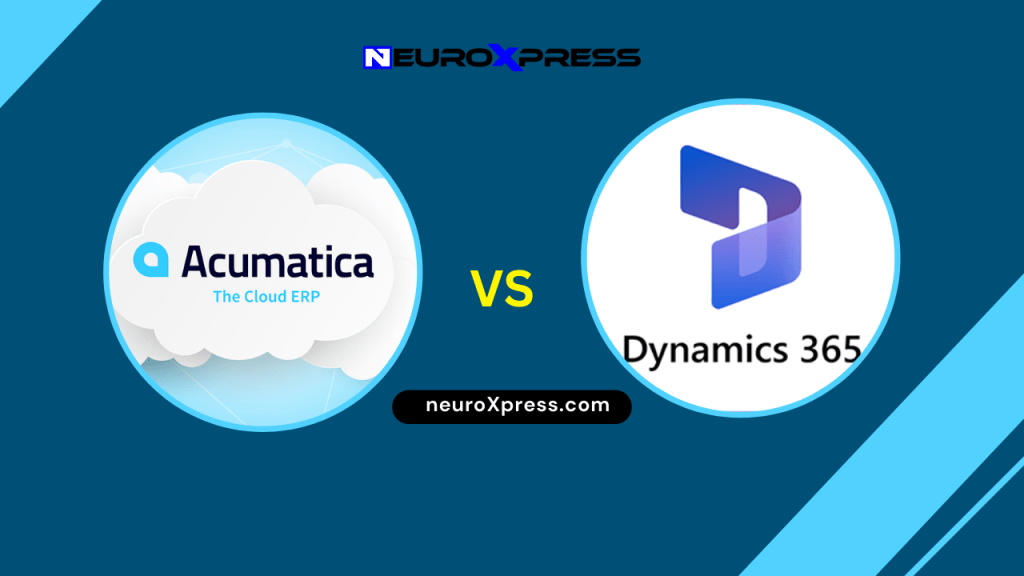Acumatica ERP vs. Microsoft Dynamics 365: Finding Your Business’s Perfect ERP Partner
Choosing an ERP system is a big deal. It’s like deciding on the central nervous system for your business—you need something that’s reliable, adaptable, and helps you run smoothly. Acumatica ERP vs Microsoft Dynamics 365 are two strong contenders, but which one is the right fit for your organization? Let’s dive in and find out.
Imagine you’re aiming to bring all your business operations under one roof, from finances to inventory, sales to customer service. Sounds familiar? You need an ERP system that can handle it all, and you want it to be user-friendly and scalable.
That’s where Acumatica and Dynamics 365 come into the picture. Think of it this way: They’re like two different tools in a well-stocked toolbox, each designed to tackle specific challenges. And here’s the thing: We’re not just comparing features; we’re looking at how these systems can genuinely improve your day-to-day operations. But let’s be real: Every business is unique. So, let’s break down the key differences and help you find your perfect ERP match
Acumatica ERP vs Microsoft Dynamics 365: Which One is Better?
In the ever-evolving landscape of enterprise resource planning (ERP) solutions, businesses are often faced with the challenge of selecting the right platform to streamline their operations. Acumatica and Microsoft Dynamics 365 are two of the most popular options available today. Each offers unique features and capabilities that cater to different business needs. This article will provide a comprehensive comparison of these two ERP solutions, helping you determine which one is the best fit for your organization.
Key Features of Acumatica ERP
Acumatica ERP is a cloud-based solution designed to provide businesses with a comprehensive suite of tools for managing their operations. Here are some of its key features:
- Cloud-Native Platform: Acumatica is built for the cloud, offering seamless scalability and access from anywhere.
- User-Based Licensing: Unlike traditional per-user models, Acumatica offers consumption-based pricing, benefiting businesses with larger teams.
- Industry-Specific Modules: Acumatica provides tailored solutions for verticals like construction, retail, and manufacturing.
- Integration Capabilities: The platform supports extensive integrations through open APIs and pre-built connectors.
Key Features of Microsoft Dynamics 365
Microsoft Dynamics 365 is a versatile ERP solution that combines various business applications into a single platform. Its key features include:
- Comprehensive Suite: Dynamics 365 offers a wide range of applications, including finance, sales, customer service, and operations.
- Seamless Integration with Microsoft Products: The platform integrates well with other Microsoft products, such as Office 365 and Power BI, enhancing productivity.
- Customizable Workflows: Users can create custom workflows to automate processes and improve efficiency.
- AI and Analytics: Dynamics 365 leverages artificial intelligence and analytics to provide insights and improve decision-making.
Pricing Comparison
| Feature | Acumatica ERP | Microsoft Dynamics 365 |
|---|---|---|
| Starting Price | Approximately $1,000/month | Approximately $70/user/month |
| Licensing Model | User-based consumption | Per-user subscription |
| Implementation Costs | Varies based on customization | Varies based on modules selected |
Pros and Cons Comparison
| Criteria | Acumatica ERP | Microsoft Dynamics 365 |
|---|---|---|
| Pros | – User-friendly interface | – Seamless integration with Microsoft products |
| – Highly customizable | – Advanced AI and analytics capabilities | |
| – Strong project management tools | – Comprehensive sales and marketing automation | |
| – Flexible cloud-based access | – Unified interface across applications | |
| Cons | – Initial setup can be complex | – Higher cost for advanced features |
| – Limited third-party integrations | – Requires Microsoft ecosystem for full benefits |
Summary Diagram
| Criteria | Acumatica ERP | Microsoft Dynamics 365 |
|---|---|---|
| Ease of Use |
8/10 |
7/10 |
| Customization |
9/10 |
8/10 |
| Integration |
7/10 |
9/10 |
| Cost-Effectiveness |
8/10 |
6/10 |
| Scalability |
9/10 |
8/10 |
Conclusion of Acumatica ERP vs Microsoft Dynamics 365
Both Acumatica ERP and Microsoft Dynamics 365 offer robust solutions for businesses looking to enhance their operations. Acumatica stands out with its flexible licensing and user-friendly interface, making it an excellent choice for mid-sized businesses. On the other hand, Microsoft 365 provides a comprehensive suite of applications and strong integration with other Microsoft products, making it ideal for organizations that rely heavily on the Microsoft ecosystem.
Ultimately, the choice between Acumatica and Microsoft Dynamics will depend on your specific business needs, budget, and the level of customization required. By carefully evaluating the features, pricing, and pros and cons of each solution, you can make an informed decision that aligns with your organization’s goals.
